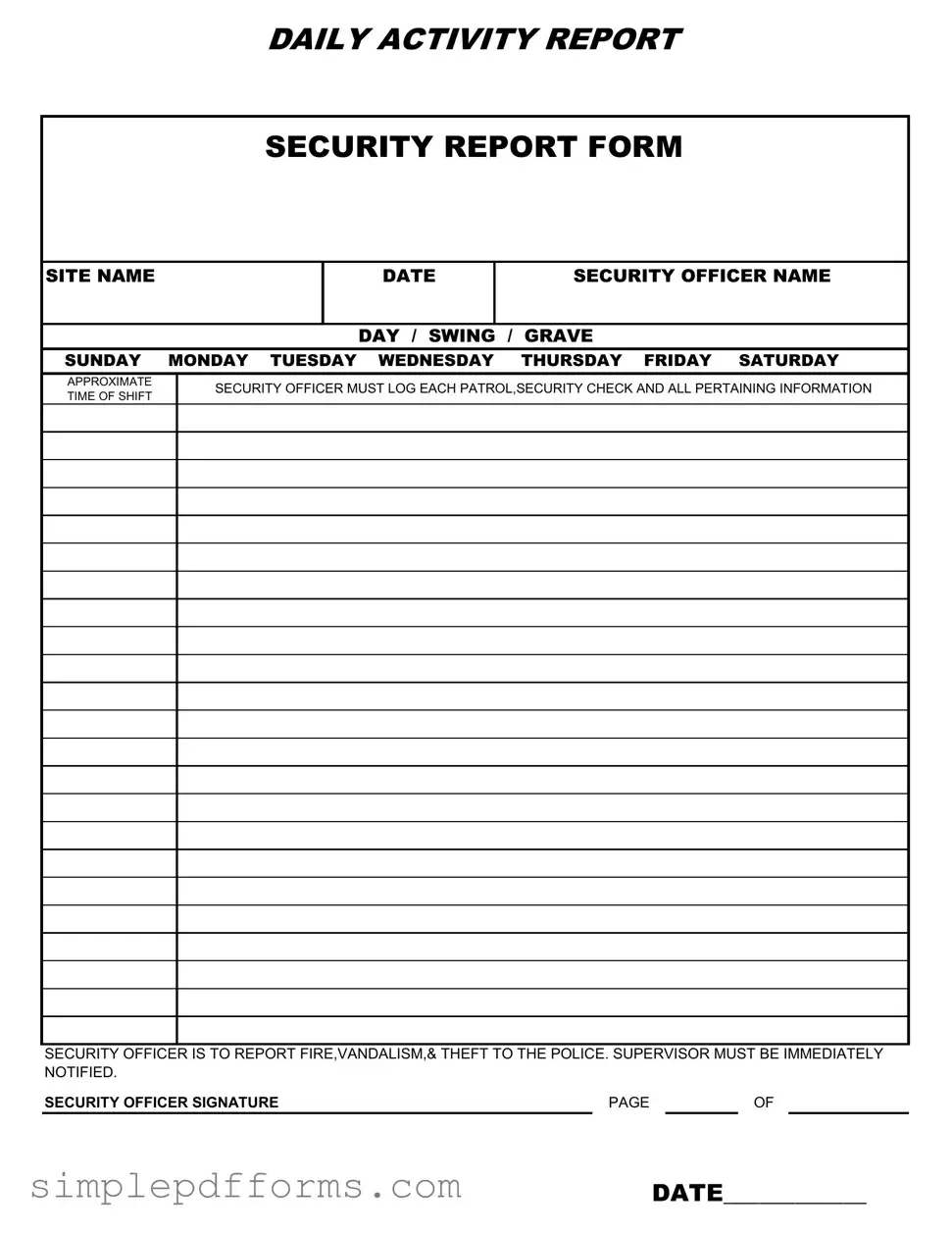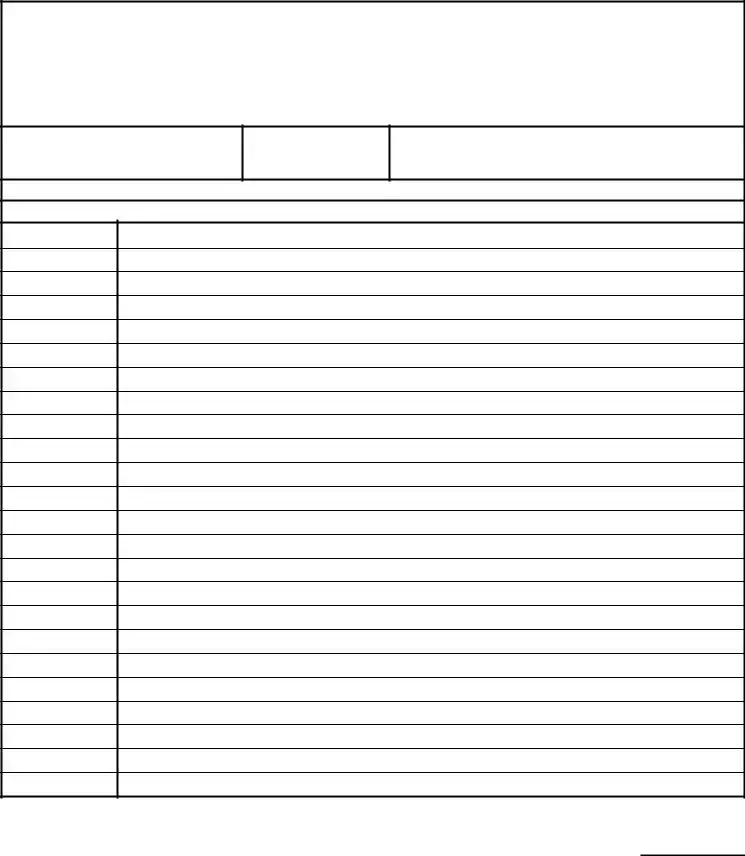When filling out the Security Guard Daily Report Sample form, many individuals make common mistakes that can lead to confusion or incomplete documentation. One frequent error is neglecting to include the site name. This crucial piece of information helps identify where the report originated. Without it, anyone reading the report may struggle to understand the context, which can be problematic in an emergency situation.
Another common mistake involves the date entry. People sometimes forget to write the date or mistakenly enter the wrong date. This can create significant issues, especially if the report needs to be referenced later. Accurate dating is essential for maintaining a reliable record of events, and any discrepancies can lead to misunderstandings or disputes.
Security officers often overlook the importance of logging their patrol times accurately. Failing to record the approximate time of shift can leave gaps in the report. These gaps may prevent supervisors from understanding when specific incidents occurred, which is vital for assessing security effectiveness and responding to issues.
Additionally, some officers may not detail their patrols and security checks adequately. Simply stating "patrolled" without specifying the areas checked or noting any observations can lead to incomplete reports. Each patrol should be documented with relevant information to provide a clear picture of the day's activities.
It's also important for security officers to report incidents such as fire, vandalism, or theft promptly. Some may forget to notify the police or fail to document these incidents on the report. This oversight can hinder investigations and response efforts, making it crucial for officers to follow the reporting protocol closely.
Finally, the signature section is often mishandled. Officers may forget to sign the report or fail to include the correct date. A missing signature can render the report unofficial, undermining its credibility. Ensuring that every section of the report is complete, including the signature, is vital for maintaining accurate records and accountability.

